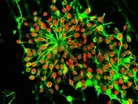Why is Everyone Talking about Stem Cells?

If you haven’t heard the buzz about stem cells yet, you may just be a little too secluded. Stem cells have been in the media for years now, but have garnered much more attention in recent months.
In fact, just today scientists announced that they have discovered a way to treat baldness and promote hair growth by using stem cells.
But why all the hype?
[READ MORE] This Infographic Shows Us How Deadly Superbugs Really Are
Before we get into how important stem cells are, we have to first understand what they are.
Stem cells are distinguished from other cell types by two important characteristics. First, they are unspecialized cells capable of renewing themselves through cell division, sometimes after long periods of inactivity.
Second, under certain physiologic or experimental conditions, they can be induced to become tissue- or organ-specific cells with special functions.
In some organs, such as the gut and bone marrow, stem cells regularly divide to repair and replace worn out or damaged tissues. In other organs, however, such as the pancreas and the heart, stem cells only divide under special conditions.
Stem cells are important for living organisms for many reasons. In the 3- to 5-day-old embryo, called a blastocyst, the inner cells give rise to the entire body of the organism, including all of the many specialized cell types and organs such as the heart, lungs, skin, sperm, eggs and other tissues. In some adult tissues, such as bone marrow, muscle, and brain, discrete populations of adult stem cells generate replacements for cells that are lost through normal wear and tear, injury, or disease.
[READ MORE] The Coming Crisis of Antibiotic Resistance
Given their unique regenerative abilities, stem cells offer new potentials for treating diseases such as diabetes, and heart disease. However, much work remains to be done in the laboratory and the clinic to understand how to use these cells for cell-based therapies to treat disease, which is also referred to as regenerative or reparative medicine.
The following infographic breaks down stem cells even further.

Follow us on Twitter (@HealthcareGlbl) and like us on Facebook!



